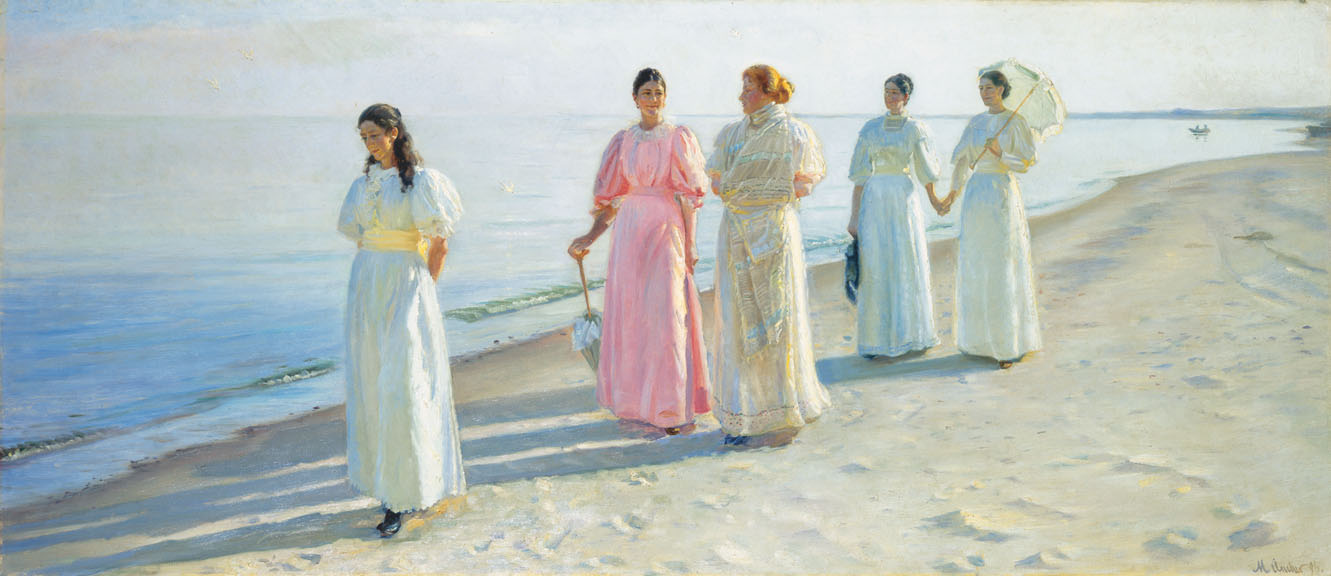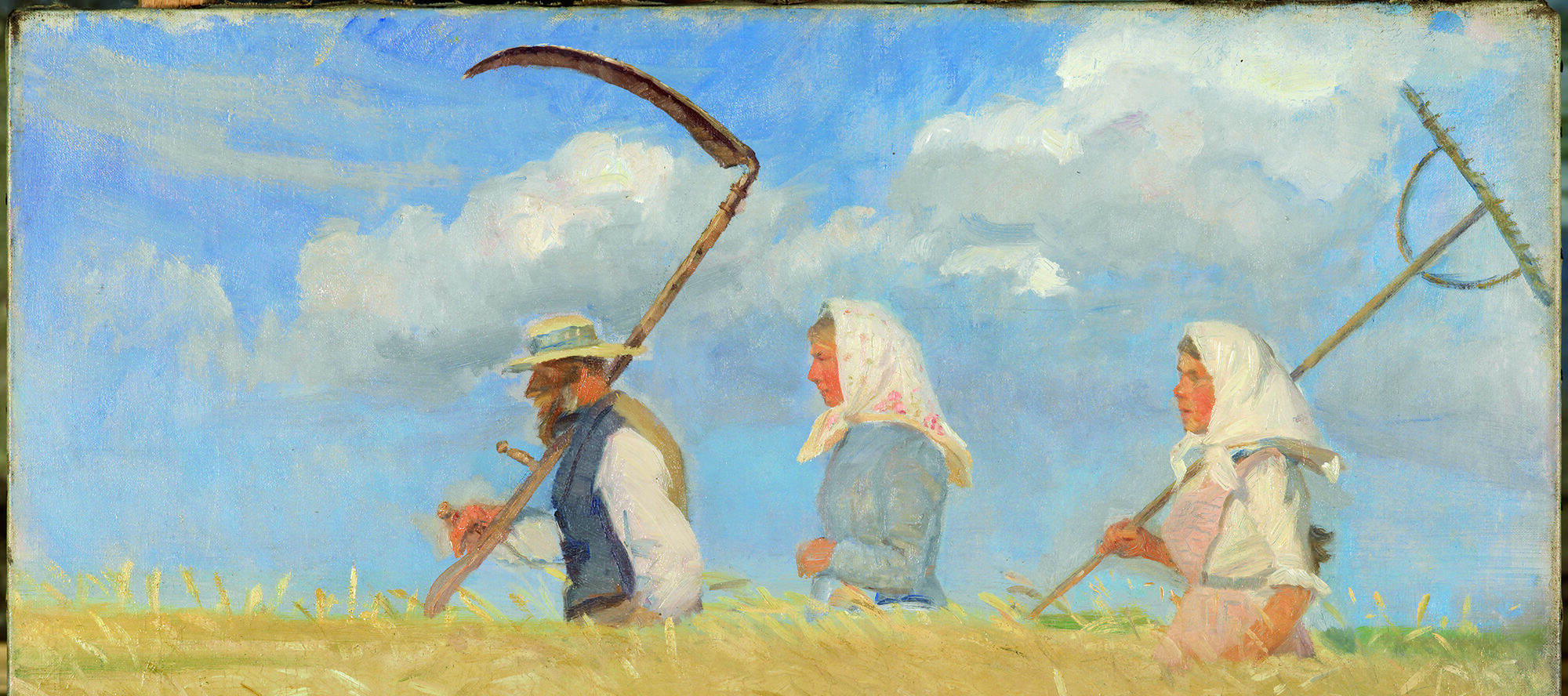“Skagen was a magical city of beaches entirely surrounded by water,” writes Skagens museum curator Mette Bogh Jensen in the exhibition catalogue. As one of the thematic sections of A World Apart: Anna Ancher and the Skagen Art Colony, “Land and Sea” showcases the artists’ fascination with the unspoiled landscape of the seaside town.
Skagen’s beaches, fields, and “special light,” were well-suited for artists who wanted to pursue painting en plein air, or outdoors. Adventurous artists and visitors traveling to remote Skagen had to spend the better part of a day in a horse-drawn carriage along the shore, as depicted in Carl Locher’s The mail coach. The thickly impastoed scene shows sandy dunes with a carriage approaching in the distance.
Among the most dramatic depictions of outdoor subjects are large-scale scenes of fishermen at work, often presenting turbulent seas and thunderous clouds. Painters such as P.S. Krøyer found themselves frequently frustrated by the weather: they couldn’t easily work outside during storms, but on calm-weathered days when they were eager to paint from life, their models, fishermen from the town, needed to be working at sea.

However, Skagen’s beach also became a place of leisure and recreation after an increase in tourism in 1890. Michael Ancher’s A stroll on the beach perpetuates this idealized view of Skagen life by showing middle-class women enjoying the bucolic setting. Furthermore, sea views were not the only nature scenes worth depicting. Skagen also had fertile fields where farmers grew a variety of grains.
In The Harvesters, Anna Ancher portrays laborers returning from the fields. She was “the only Skagen painter who painted the cultivated landscapes,” as Jensen revealed in a gallery talk. Skagen’s terrain was both rugged and pastoral, providing the burgeoning artist colony with a plethora of compelling subject matter.
